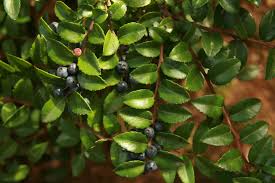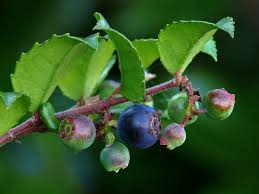Vaccinium ovatum
“Evergreen huckleberry”
ERICACEAE
Evergreen shrub
Zone: 6 – 9
Native habitat: Pacific Northwest with range into California
Conditions
Soil: high organic content
Moisture: well drained is essential, drought tolerant once established
Light: full sun (not best) to full shade – better not in afternoon sun
Exposure: general
Plant size (h x w): 4′ – 8′ x 6”
Other: usually larger in shade
 Aesthetic
Aesthetic
Shape/stem:
Leaf: small leaves, new growth pinky-copper mature to shiny dark green, leather, serrate, dull and lighter underneath
Flower:Small, urn-shaped white flowers hang under the foliage
Bloom: spring
Other: slow growing; black, succulent berries in late summer / early fall are edible
 Treatment (how to…)
Treatment (how to…)
Plant: general, water while establishing
Maintain: low maintenance, thinning cuts of oldest stems, can also sheer, prefers little to no maintenance
Propagate: cutting (summer)
 Uses
Uses
Landscape: mixed boarder, winter interest, native garden, informal hedge, edible garden, wildlife garden, shade garden, four season interest, adds weight to a largely deciduous bed, woodland, natural low screen
Companion planting: nice with larger foliage plants like rhododendrons and ferns; some other ideas: Sambucus nigra, Stipa spp, Lambs ear, Heuchera spp., Astilbe spp,
Medicinal: unknown, berries edible
Other: berries make a great jam
Vulnerabilities
Pests and disease: none significant
Deer resistant: no
Interest
Local info,: Eastern North America native, P. capitatus is native to Western North America
Pot size (to purchase): 1 gallon
Nature: North American native evergreen shrub
Identification (key features): .
shiny, waxy, alternately arranged, egg-shaped leaves, 1″, finely serrated edges; urn shaped flowers; round, edible black berries about 0.5″

Interesting facts:
Cultivars:
Comments: beautiful in grown in good conditions (morning sun then shade is best); under-used native
